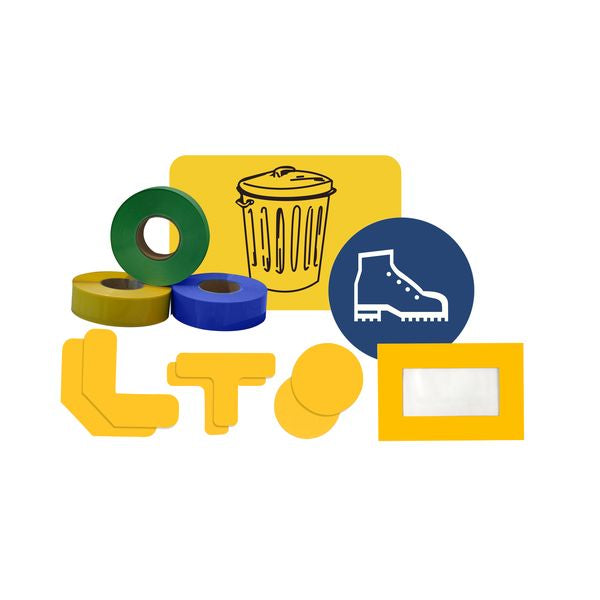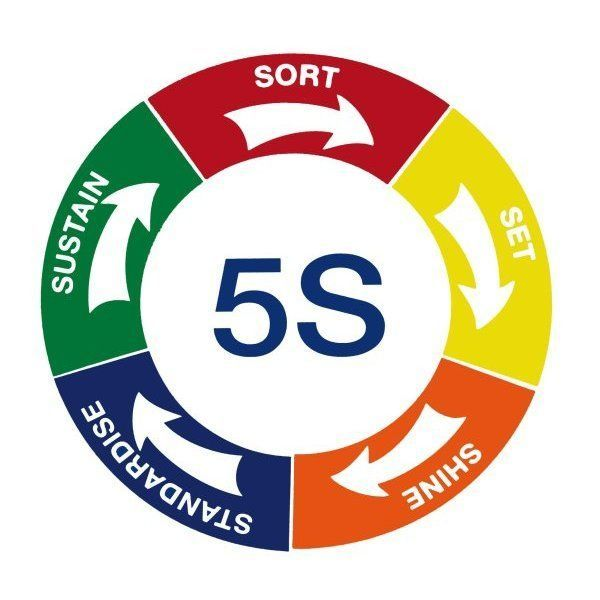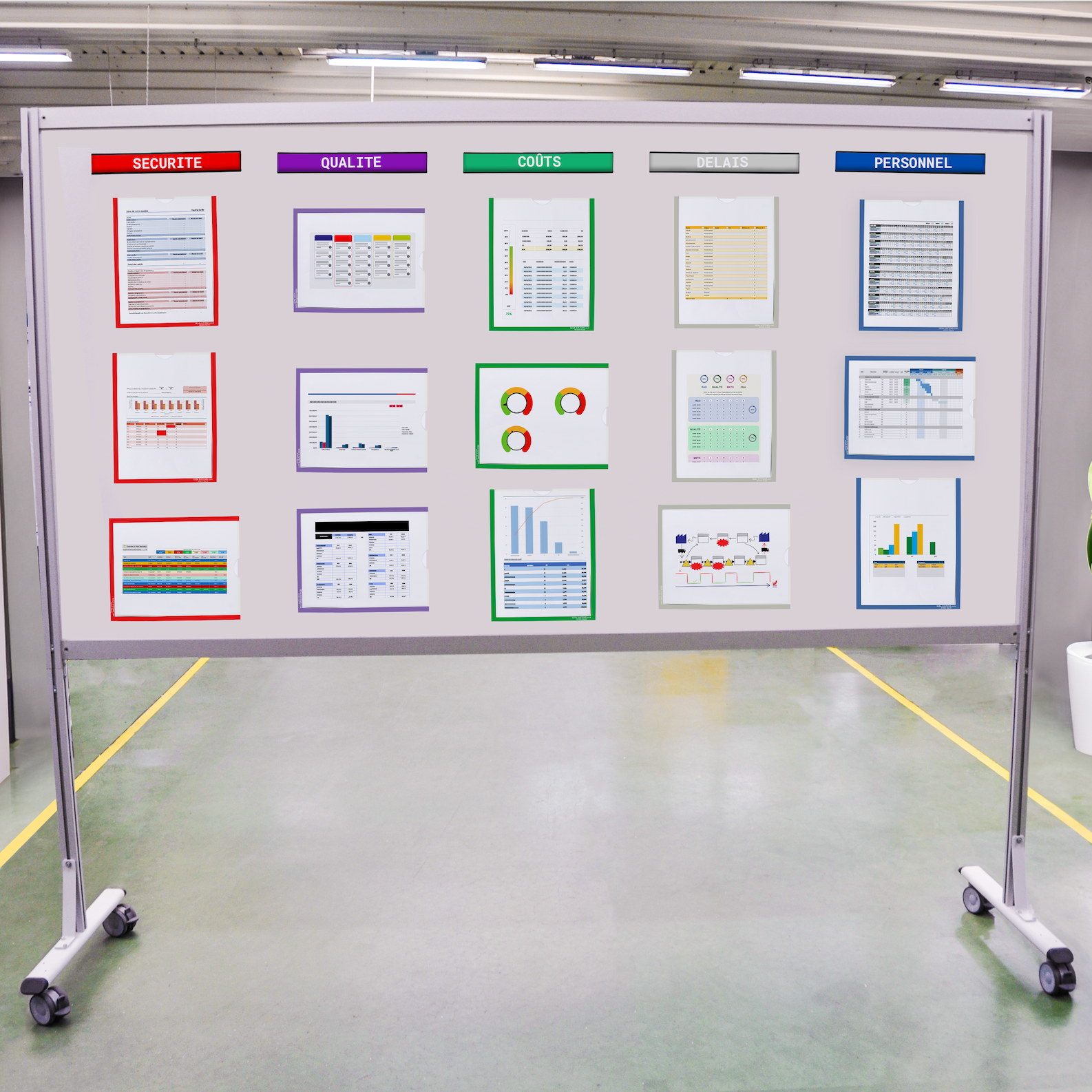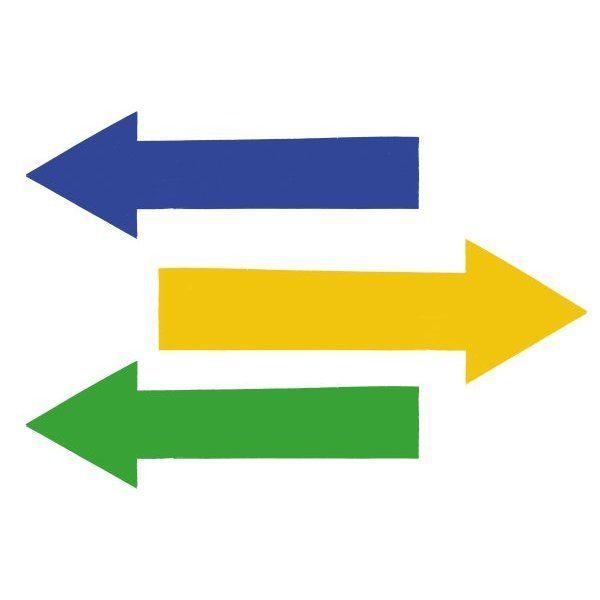The 5S method is originally from Japan and was developed by the Japanese automobile industry in the 1950s and 1960s. It has been adopted by many other industries in Japan and has been introduced in other countries to improve the efficiency and quality of work processes. Today, the 5S method is widely used in many sectors and workspaces, including production, logistics, service, and health services. The basic principles of the 5S method are widely considered a standard for continuous improvement of work processes.
What are the benefits of implementing the 5S method?
The 5S method is therefore implemented to improve quality, productivity, safety, and employee satisfaction in a working environment. The 5S (Seiri, Seiton, Seiso, Seiketsu and Shitsuke) are basic principles for organising and optimising work processes, ensuring that workplaces are always clean, in order and safe. The 5S method can also contribute to a better use of resources and a reduction in costs. Ultimately, the implementation of 5S can help companies achieve their long-term strategic goals. In addition, the application of 5S has several benefits for the company:
- Quality improvement: by standardising work processes and improving the working environment, the 5S method can help to improve the quality of products and services.
- Increased productivity: By making objects and tools easily accessible and by eliminating unnecessary distractions and waste, the 5S method can increase employee productivity.
- Time and cost savings: 5S can help reduce waste and costs by eliminating inefficiencies and repeating procedures.
- Improved safety: By ensuring that work areas are clean, tidy, and safe, the 5S method can contribute to improved employee safety.
- Employees' motivation and commitment: Encouraging employees to participate in the implementation of the 5S method can increase their commitment and motivation.
Usually, the use of the 5S method can help companies to achieve their long-term strategic goals by improving quality, productivity, safety and employee satisfaction, so it is highly recommended to implement it in any company.
What are the steps to implement of the 5S method in a company?
In order to put the 5S method in place in a company, a few steps must be followed:
- Raising awareness and training: First, it is important to raise awareness and train all employees on the 5S method and its importance for improving work processes. This awareness-raising stage can be facilitated by using a 5S training game. In this way, awareness is raised in a playful way, which leads to greater involvement and better organisation of the employees.
- Seiri (sorting): This step involves sorting and discarding unnecessary items and clutter. Important items should be organised and arranged in a clear manner so that only the necessary items are kept in order.
- Seiton (storage): This step involves establishing a location for each object to facilitate the location and use of tools, materials, and equipment.
- Seiso (cleaning): This step aims to clean the working environment to prevent sources of contamination and accidents.
- Seiketsu (standardisation): Here it is important to standardise work processes and cleaning methods to maintain a clean and safe working environment.
- Shitsuke (discipline): Finally, it is important to maintain the standards and processes in place by encouraging discipline and individual responsibility among employees.
These steps should be repeated regularly to ensure that the standards are maintained and that the goal is achieved. To ensure that the standards are met, it is also possible to implement 5S audits, for example via the SESA CHECK application. The purpose of these audits is to check whether the workstation is in line with the defined standard. If something differs from the standard, it is easier to correct it via frequent audits.
How to make the benefits of the 5S method complete?
Although very effective in optimising processes when correctly applied, 5S alone is often insufficient and needs to be combined with other approaches. Indeed, the 5S method is an integral part of the LEAN production system and can be combined with other methods such as LEAN Management, LEAN Manufacturing or LEAN Office to improve the efficiency and quality of work processes. Here are some examples of LEAN methods that can complement the 5S method:
- The Kanban method: a visual method for managing production flows that allows for better coordination and reduced delays.
- SMED (Single Minute Exchange of Dies): a method for reducing downtime and accelerating production cycles.
- TPM (Total Productive Maintenance): a method for improving equipment availability and product quality by working closely with maintenance employees.
- Kaizen: a method for continuing to improve processes by using continuous improvement techniques and encouraging the participation of all staff.
By using these methods in combination with the 5S method, companies can optimise production, reduce costs, improve quality and increase employee satisfaction.
If you are planning to implement one of these methods in your company, do not hesitate to contact one of our LEAN experts!




